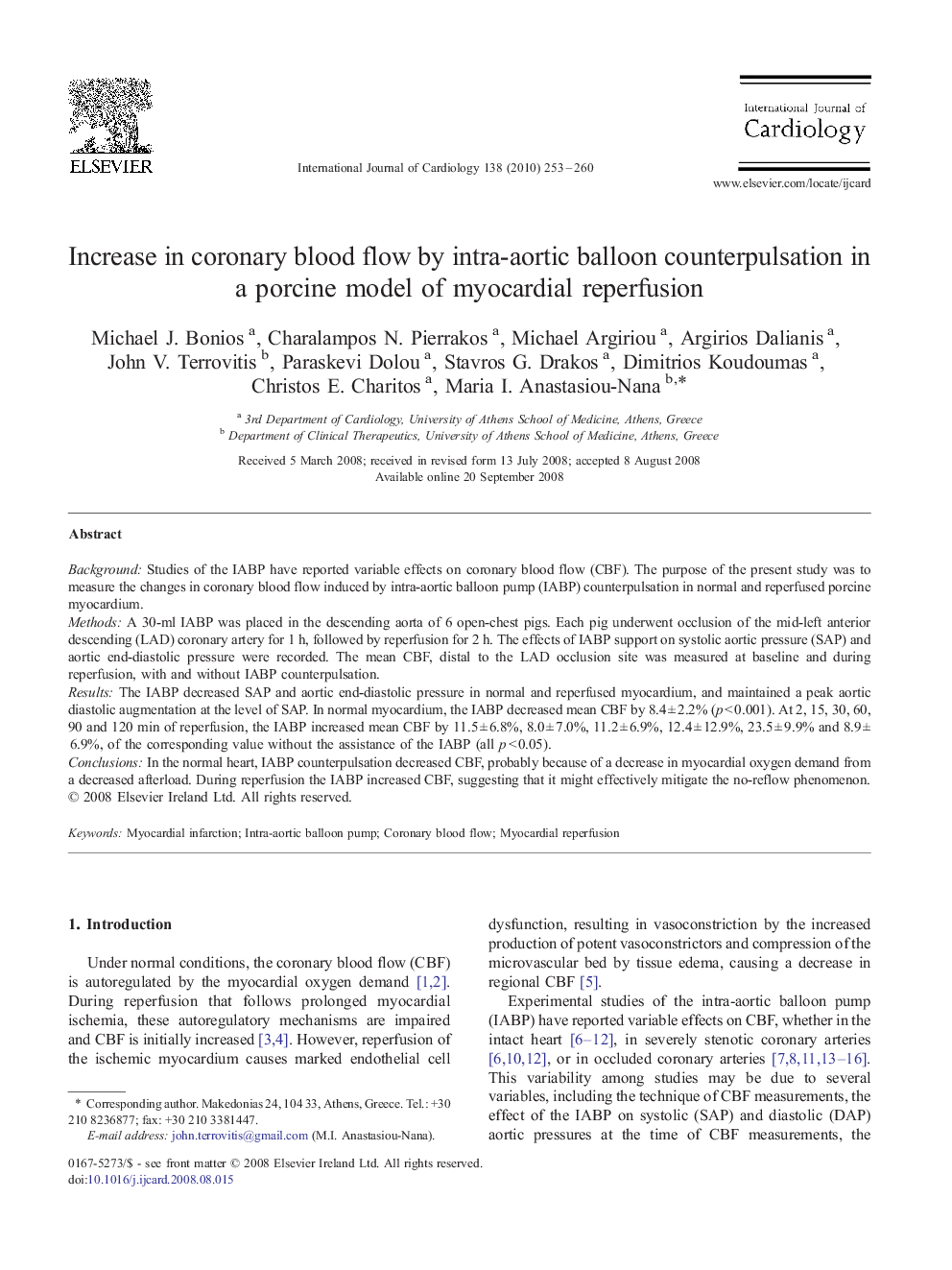| Article ID | Journal | Published Year | Pages | File Type |
|---|---|---|---|---|
| 2933143 | International Journal of Cardiology | 2010 | 8 Pages |
BackgroundStudies of the IABP have reported variable effects on coronary blood flow (CBF). The purpose of the present study was to measure the changes in coronary blood flow induced by intra-aortic balloon pump (IABP) counterpulsation in normal and reperfused porcine myocardium.MethodsA 30-ml IABP was placed in the descending aorta of 6 open-chest pigs. Each pig underwent occlusion of the mid-left anterior descending (LAD) coronary artery for 1 h, followed by reperfusion for 2 h. The effects of IABP support on systolic aortic pressure (SAP) and aortic end-diastolic pressure were recorded. The mean CBF, distal to the LAD occlusion site was measured at baseline and during reperfusion, with and without IABP counterpulsation.ResultsThe IABP decreased SAP and aortic end-diastolic pressure in normal and reperfused myocardium, and maintained a peak aortic diastolic augmentation at the level of SAP. In normal myocardium, the IABP decreased mean CBF by 8.4 ± 2.2% (p < 0.001). At 2, 15, 30, 60, 90 and 120 min of reperfusion, the IABP increased mean CBF by 11.5 ± 6.8%, 8.0 ± 7.0%, 11.2 ± 6.9%, 12.4 ± 12.9%, 23.5 ± 9.9% and 8.9 ± 6.9%, of the corresponding value without the assistance of the IABP (all p < 0.05).ConclusionsIn the normal heart, IABP counterpulsation decreased CBF, probably because of a decrease in myocardial oxygen demand from a decreased afterload. During reperfusion the IABP increased CBF, suggesting that it might effectively mitigate the no-reflow phenomenon.
